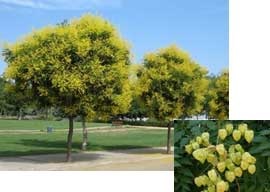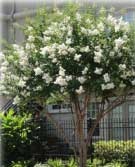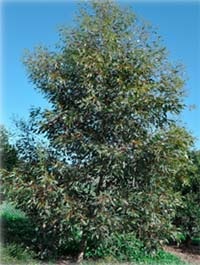Street trees in Windsor Avenue, Mount Waverley
Our focus is on preserving trees that are healthy and creating additional planting in local parks and reserves to boost greenery.
We will only be removing and replacing those trees that are dead, dying (with a useful life expectancy of less than two years) or dangerous (they pose a risk to the community in the short term).
Street Tree Assessments
Our arborists have completed individual tree assessments based on the above criteria. In Windsor Avenue, we are proposing to remove 8 trees and will be planting a total of 17 trees, which includes an additional 9 trees in vacant locations.
Replacement Tree Species
Council's arborist has proposed three appropriate tree species to be considered for planting. In some cases, we will need to select two complementary species to be planted on either side of the road to accommodate constraints such as power lines, service pits and other infrastructure that exists within the street.
A proposed street tree renewal plan including all proposed tree removals, replacements and species choices has been drafted for Windsor Avenue, Mount Waverley:
Windsor Avenue - Proposed Tree Renewal Plan(PDF, 2MB)
We will be seeking feedback on the preferred species from all directly affected residents via an online survey or postal vote. The species of tree that receives the majority of preferences will be planted in 2020, after the removal of trees identified in the plan.
Survey Results
Council sought community feedback (reply paid mail survey and online) on the preferred option of tree species directly affected residents would like to see planted in their street (until Friday 23 August 2019).
As a result of the recent survey on the preferred tree species for Windsor Avenue, your street has selected Option 2 – “Lagerstroemia indica x L. fauriei, Natchez Crepe Myrtle”.
This tree will be planted between July and September 2020 on both the power line and non-power line sides of the street.
Council will be responsible for the care of the new street trees for the first two years as they become established. However our residents can play a vital role in their successful establishment by keeping an eye on them and reporting to Council if they see the tree is not looking well or has been damaged.
The trees will then become part of Council’s annual tree maintenance program, where they will be checked and pruned, if necessary.
Thank you for providing your feedback to renew your streetscape and Monash’s highly valued tree canopy.
Please see voting results:
- Option 1: 4 votes
- Option 2: 8 votes
- Option 3: 5 votes
For more information, please contact Lucas Skelton, Manager Horticulture, on 9518 3555.
Option 1 - Single species (both sides of the road)
Power line side / Non-power line side

Koelreuteria paniculata - Golden Raintree
This species is an elegant small tree. It has serrated, green, pinnate leaves and branches which droop at the ends creating a slight weeping effect. The foliage turns bronze to gold in autumn. In summer, chains of bright yellow flowers are produced, followed by papery lantern-like seed pods which hang from the tree in large clusters.
Mature Size (h x w): 7-10m x 10m
Form: Round
Option 2 - Single species (both sides of the road)
Power line side / Non-power line side

Lagerstroemia indica x L. fauriei 'Natchez' - Natchez Crepe Myrtle
This small deciduous tree that has white flowers borne in clusters from late summer to early autumns. It has a beautiful growth habit with dark green leaves changing to orange before falling. It has flaking bark with a rich brown under bark.
Mature Size (h x w): 8 x 6m
Form: V-Shaped
Option 3 - Single species (both sides of the road)
Power line side / Non-power line side

Eucalyptus mannifera 'little spotty' - Little Spotty
A ‘Little spotty' is a small, slender, very hardy, evergreen tree. The leaves are fine and grey-green in colour and the bark is creamy white with cream or red patches. It has lovely masses of cream coloured flowers from winter to summer, which is great for attracting nectar-feeding birds.
Mature Size (h x w): 5 x 7m
Form: Round